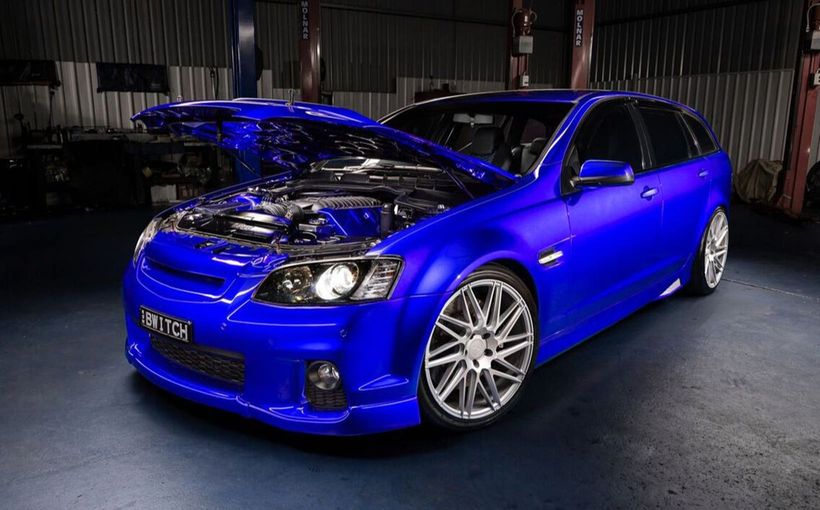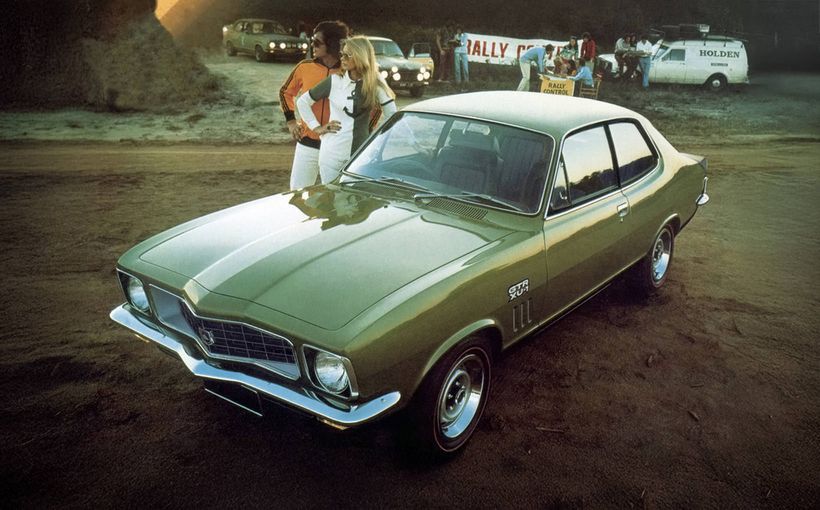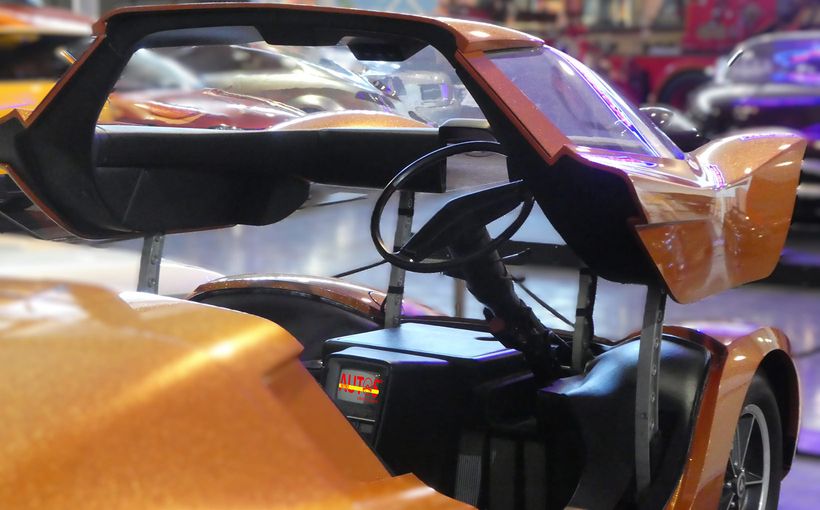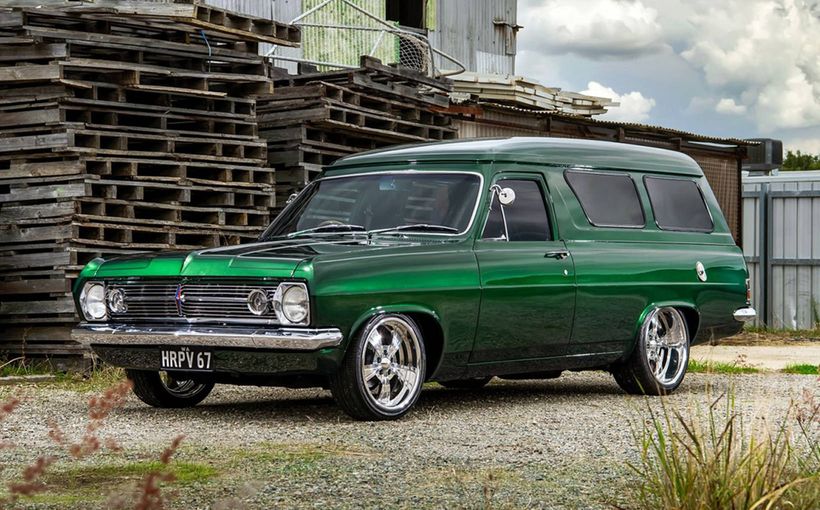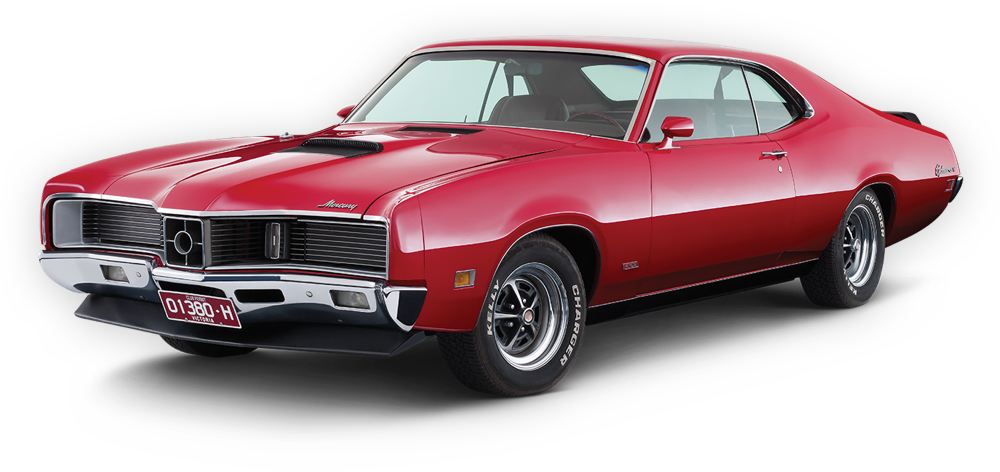
When the HD was released in February 1965—yes, 60 years ago!—Holden proudly proclaimed it was a “Leap Ahead” and a “Look Apart”.

The leap ahead was the HD’s curved body, doors and glass which delivered class leading passenger space. Adding five inches/127mm of interior width but only two inches/52mm of external width, the HD recognised that growing Australian families with baby boomer teenagers needed more room to spread out.


The look apart styling was as bold as anything in the USA. The front fenders confidently pointed into the future. The rear window was an intriguing combination of convex and concave curves. The tail lights blended seamlessly into the body rather than appearing to be an afterthought.
“… not a straight piece of glass on the car…”
said Motor Manual magazine in March 1965.


Headlining the engine offerings was the X2, boasting 140bhp. Brakes were claimed to be 30% bigger.

The March 1965 edition of Wheels raved that:
“Apart from more power, more size and more style, the new HD Holden has three firsts: First production Holden to top 100mph, first true six-seater Holden and first Holden in which the tall driver can sit straight armed. That should be enough for anyone.”
Motor Manual was equally dazzled:
“With curvaceous, more spacious contours and better engineering… there’s little the overseas competition can offer to swing the family car man away from its (Holden’s) showrooms.”

For a few months the HD did leap ahead. March sales topped 18,000, a new record for Holden.
Trouble was, during its development, the company’s top executives had demanded specific packaging requitements and cost savings. These combined to comprise the car’s appeal and performance.

Three styling programs
The HD’s journey from design to driveway involved three separate styling programs. The first program was all-Australian. The follow ups were all-American.



Throughout the three programs the HD was coded “EF”. How the EF became the HD is a wonderful automotive yarn. Retired Holden design director, Leo Pruneau, was in the room when it happened. I’ll get to his recollection later in this story.
Alf Payze, Holden’s then chief stylist, began work on the EF/HD in early 1961. He’d just completed the EJ and EH. Two operational EJ prototypes were en-route to the USA for final approval by GM’s top executives. Photos of the EH had been sent to GM’s design studios in Detroit, also for approval.

By July 1961, Payze had developed a full-sized, two-sided fiberglass prototype and seating buck of the EF/HD. Holden’s executives approved the car for production. Photos of it were mailed to Detroit. Authorisation was expected.


Dr John Wright interviewed Payze for his book Heart of the Lion. Payze recalled that his inspiration for the EF/HD came from Opel.

But the EF/HD never went beyond what you see in the photos. The program was terminated and in August 1961 the styling responsibilities for the EJ, EH and EF/HD were transferred to the USA.

The instigators of the abrupt change were Bill Mitchell, GM’s design vice president, and some of his senior design executives. After seeing the EJ, EH and EF/HD proposals they did not believe that Holden’s styling direction was aligned with their vision of the future. Holden was not alone in this. The German proposal for the 1964 Opel Kapitan/Admiral/Diplomat (KAD) was also rejected, and its styling transferred to the USA.
For a deep dive into Mitchell’s “take over” of Holden’s styling programs and its consequences, please read my Shannons Club story about the EJ’s development. There’s a link at the end.

When you look at the Australian EJ, EH and EF/HD proposals you can appreciate Mitchell’s intervention. His idea of the future can be seen in the Corvair, Buick Riviera, Corvette and many other memorable shapes.

The EF/HD, on the other hand, was a return to the mid-fifties. Can you imagine this car enticing buyers into Holden dealerships in 1965 and 1966?

The American EF/HD
In late August 1961, Mitchell assigned Stan Parker to refine the EJ and EH. He was also tasked with developing three proposals for the EF/HD. The project was coded XP766 and given a 10th January, 1962 deadline.
Holden’s bosses did not object to Mitchell’s intervention (they had no choice) but demanded some non-negotiable design and budget parameters. They insisted the EF/HD carry-over as much of the EJ/EH’s running gear and dimensions as possible, especially the 54 inch/1370mm track. That saved development money. The wheelbase was set at 106 inches/ 2692mm, a one inch/25mm gain over the EH. At the same time, the car had to comfortably accommodate six adults across the bench seats and the spare wheel stand up in the boot.
The cost cutting and packaging requirements restricted what the designers could create. To fast track the design process Parker used the recently released Chevrolet Chevy II/Nova as a template, shrinking it slightly to meet Holden’s dimensional demands.






Although Parker’s proposals were stylish, they were not what Bill Mitchell was looking for, and so he turned to a secret concept car called the “Solaris”, which had been developed in the advanced design studio.
The Solaris project was led by Carl Renner, one of GM’s legendary designers. He was assisted by two new recruits, Don Lasky and Leo Pruneau.


The Solaris featured many design themes which Mitchell was keen to get into production, especially “coke bottle” side styling and curved doors and side glass. He’d been unable to convince GM management to implement these features for the US market. Determined to implement his ideas, and using his corporate power, he assigned Lasky and Pruneau to the International studio and told them to apply the Solaris’s design themes to the 1964 Opel KAD and EF/HD.
Don and Leo completed the Opel at the end of February 1962 and began the EF/HD.

With Holden’s non-negotiable demands, Leo told me the solution was to take the EJ/EH dimensions and:
“go long, go wide and go up.”

The greatest amount of additional passenger space was created by replicating the Solaris’s curved body shape, doors and side glass. More space was created by increasing the height of the car, flattening the floor and reducing the intrusion of the transmission tunnel.
To do all this the engine and transmission were moved forward by three inches/76mm and the body was raised above the floor pan by one inch/25mm. The Hydramatic transmission was replaced by the slightly smaller, two speed Powerglide.

Although the taller body accommodated the stand-up spare tyre it came at a “visual cost” of higher front and rear fenders. Plus, the EF/HD would now tower four inches/102 mm above the newly released (in Australia) R & S series Valiant and 1962 XL Ford Falcon.
To disguise the height difference, Don and Leo visually lengthened the car through a combination of sloping bonnet and boot lid, strong horizontal lines along the side of the car and stretching the front fenders ahead of the grille and rear fenders beyond the boot lid.

In early March 1962, Holden’s chief body engineer, Reg Hall, joined the team. His job was to ensure what Don and Leo were designing could be manufactured in Australia.
It is now we come to the EF/HD’s most controversial design elements, the front fender blades. Leo recalls that:
“Bill Mitchell thought the car looked too short, so he told us to make the fenders jut out ahead of the grille. So, we lengthen them. That’s when Reg Hall arrived from Australia. Reg took one look at them and protested that it would be too hard to manufacture and told us cut them back. So, we did. Mitchell came back and ordered us to lengthen them again. Then Reg asked us to shorten them again. This argument went on for a couple of weeks. Don and I would cut them off and stick them back on again. Of course, Mitchell was always going to get what he wanted because he was the boss. He convinced Holden’s management to go with a slightly modified design and that’s the way the car went into the showrooms.”


By August 1962 the styling was finalised. A fibreglass sedan and wagon were shown to GM and Holden executives. Everyone said “OK”. The cars were boxed in crates and shipped to Melbourne. The commercial models would be styled in Australia.



It was during the August approval meeting that the EF code was changed to HD. Leo was there when it happened.
“Mitchell could never understand Holden’s model code system, so he jokingly told David Hegland, Holden’s newly appointed managing director, that he was going to give the car the code “DH” in his honour. Hegland protested, so Mitchell said he’d switch it around to HD. And that’s how the EF became the HD.”

A Leap Ahead?
For me, the HD Holden was an opportunity lost.
It was heavier than the EH and used more fuel. Braking was poor because the EH’s nine inch/229mm drums were carried over to save money. Holden’s PR blurb disingenuously claimed the brakes were 30% bigger. This was achieved by making them wider, not larger in circumference.

The repositioned drive train did nothing for weight distribution and handling. The change from the Hydramatic to the Powerglide also increased fuel consumption and took the edge off performance.

Then there was the styling. Force fitting the wider and taller body over the EH’s narrow track gave the car a tippy toed appearance. And, of course, the front fenders became a focus of comment. Modern Motor magazine was probably the first to criticise their shape, saying in their May 1965 edition:
“The outside ends of the front bumper and guards stick out wickedly. Boadicea could hardly have a more effective pedestrian mangler if she drove her chariot with scythes on the axles down Collins Street at midday.”

As the market leader, Holden had a golden opportunity to use the HD to establish a new benchmark for an affordable Australian family sized car—to make a real Leap Ahead into the future—which would make it difficult for its competitors to match.
In fact, the car Holden should have built was right there in front of them in the US styling studio: the Opel KAD. With its less aggressive front-end styling, 112 inch/2845mm wheelbase and 59 inch/1500mm track, “Australianising” the Opel would have been that real leap ahead. And put Ford and Chrysler on the back foot. But Holden’s senior executives took the easy and cheap option, and gave us the compromised HD.

The price paid was significant. The December 1965 issue of Australian Motor Sports and Automobile reported that the company’s market share had plummeted from 38% in December 1964 to an estimated 30% at the end of 1965. Meanwhile, Ford’s and Chrysler’s sales were up.

Ironically, it was the 1966 XR Falcon which became that real leap ahead. With plenty of interior width for six, a 111 inch/2819mm wheelbase and 58 inch/1443mm track, its dimensions almost equalled those of the Opel KAD. They were what Australians wanted. It took Holden until the 1968 HK range to match the XR’s size.

Special thanks to John Kyros at GM Heritage Centre. Retroautos® is written and published by David Burrell with passion and with pride. Retroautos® stories and images are copyrighted. Reproducing them in any format is prohibited. Retroautos® is a registered trademark. Reproducing it in any format is prohibited.
Read more about the EJ/EH and why they were designed in the USA.




